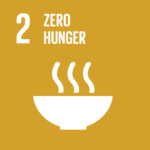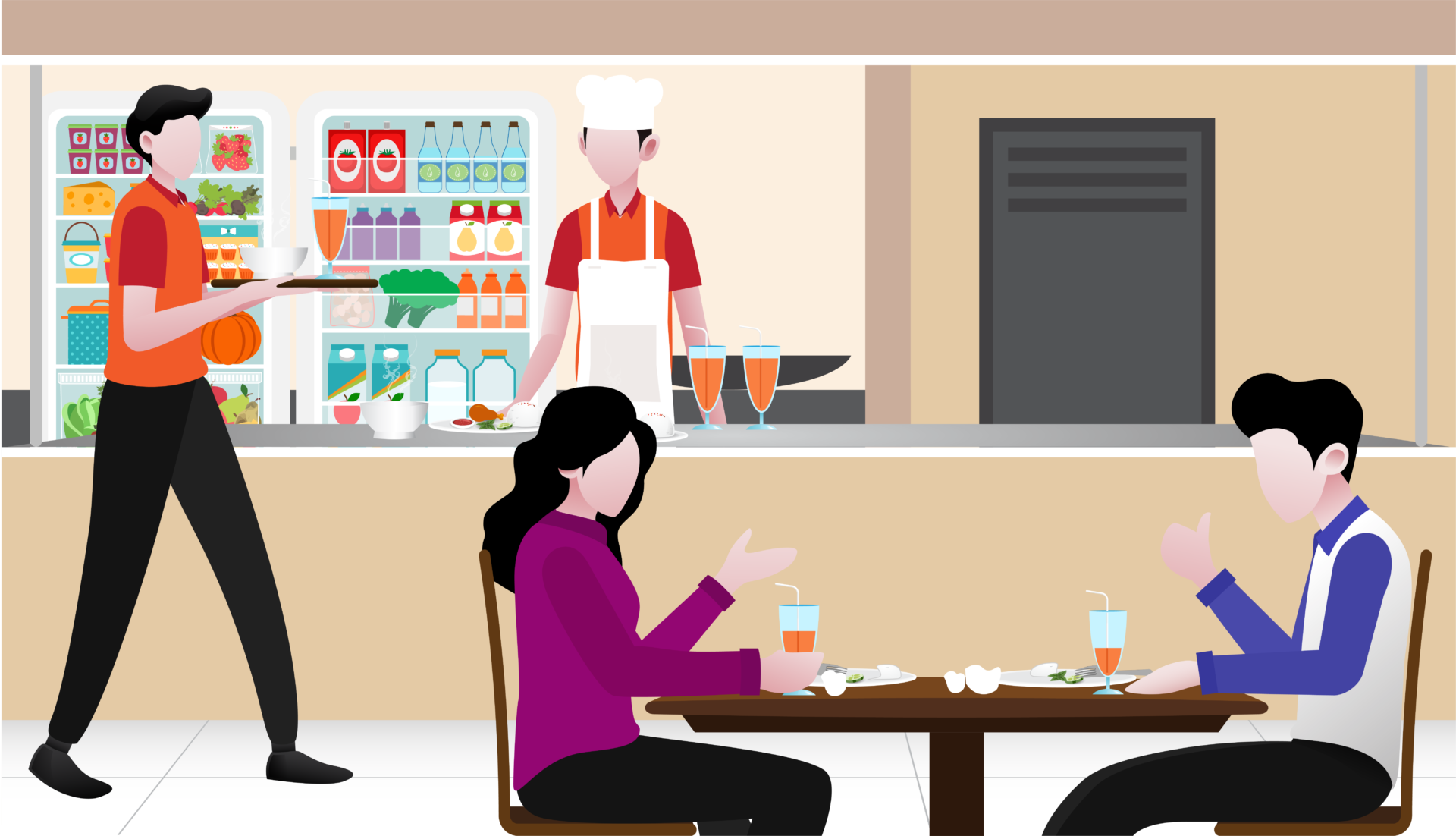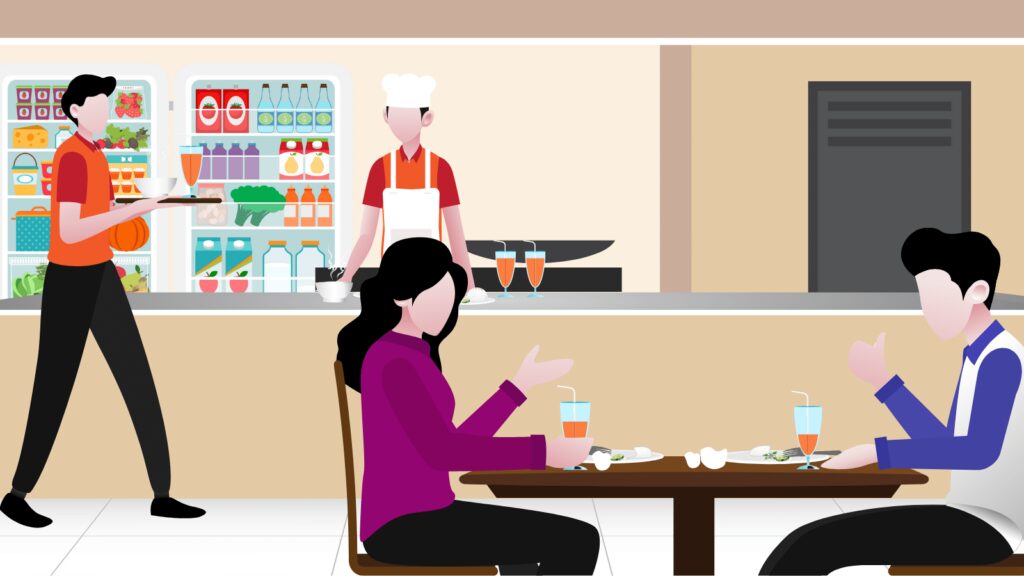Food waste is money down the drain. Here’s how you can minimise waste and maximise profitability of your F&B businesses
Food is producers and consumers. It’s local and global. It is financial growth and regeneration. It is seasonality, landscape, nature, and hard work, all the energy of those behind the agri-food system. Yet, after the second world war, economic progress, hectic lifestyle, the sense of abundance, and the culture of aesthetics have transformed the raw materials of agriculture into higher volumes of food materials and lengthened the chain that composes and connects the agri-food system.
As a result, food is being treated and conceived as a commodity to be always available, always perfect and beautiful, compromising agro-biodiversity, nutrition, taste, equal access to food, planetary boundaries, greenhouse gas emission, and climate change. Unfortunately, It is widely known now that globally one-third of food produced is then wasted. Actually, according to more updated data provided by Food and Agriculture Organization (FAO), over 40% of fresh produce goes to waste, with high probability that the real numbers are even more troubling. If food waste were a country, it would be the third leading producer of carbon emissions after the United States and China.
RELEVANT SUSTAINABLE GOALS


Kitchen Waste
Food that spoils/expires without ever being used, including surplus stocks and perishable commodities.
POST-MEAL waste
Food that your customer buys but does not finish. There’s not much you can do with the food once it’s left your kitchen, but you can still do a few things to help reduce it.
Packaging Materials & Disposable Cutlery
Packaging materials and disposable cutlery are inherently designed to be thrown away. As with wasted food, there are many benefits to reducing the amount of waste packaging

ESTABLISH A FOOD WASTE INVENTORY SYSTEM
The easiest way to identify and deal with restaurant food waste is by having a food audit. A food waste audit aims to understand the extent of the problem in your F&B establishment. A food audit helps you calculate how much food you are wasting and what kinds of food they are. Without conducting a food waste audit, there is no way of truly knowing how much your restaurant is tossing out as a result of your current operations and what your potential cost savings are.
The main goal of a food audit or a food waste audit is to pinpoint where all your food waste comes from, and then find ways to reduce this wastage. There are two ways to track this :
First, consider how many customers enter your F&B establishments every day. Then calculate how much food gets wasted each day. Once you have enough on these two aspects, it becomes easy to find out the biggest sources and reasons for food wastage in your F&B establishments.
The second step is to track your food wastage, simply by providing your kitchen staff with a logbook to note down what food waste is being generated every day in the establishment, and how much. Certain apps or software can be used to calculate the food wastage each day in your f&b establishment.
Apart from calculating what food gets wasted in the kitchen while preparing food (either due to spoilage or other factors), you need to find out how much food gets wasted once the food is served on the customers’ plates. While calculating food wastage after being served to the customers can be difficult and vary depending on the types of customers, it is absolutely necessary for long term waste management.
You could have a different logbook for this post-consumer waste, that is food that the customer paid for but couldn’t finish. It is well worth your time to evaluate what food is being wasted and how much. Collecting and analyzing this information on a monthly basis will allow you to find out your problem areas and make the necessary changes in your restaurant operation so as to reduce food wastage.
TRACK YOUR CUSTOMER TRAFFIC
Another variable you need to keep track of while running your restaurant is the amount of traffic you have on your f&B establishments. Measurement and tracking need to be done on a daily basis, and especially during holidays, weekends, and festival seasons.While the data might not make much sense to you right away, it will definitely give you a clear picture of your customer traffic in the long run. Once you have data from the previous year, you will be able to to analyse year’s findings, especially during holidays and festive seasons. You will also be able to get a clearer picture of how much traffic to expect in the coming months and years. Tracking your customers traffic will allow you to plan your inventory in a better way and maximize your profits while reducing wastage. When you narrow down restaurant POS software, you need to be sure to consider one with this racking capabilities feature.
UTILISE WASTE SHEETS & BREAK DOWN FOOD WASTE INTO 3 CATEGORIES
Once you get an idea of how much food is being wasted in your restaurant, it’s time to plan what changes you can make to reduce food wastage. First, discuss with your kitchen staff the significant types of food waste that your restaurant produces regularly. For this, we encourage you to use waste sheets; because we believe the act of tracking waste during prep and service creates awareness for you and your team.
Consider tossing prep waste into a separate bucket from the trash bin. Think about it like this: you paid per pound for the fish your prep cook is cleaning. You’re only going to get a certain percentage of yield from that raw product. Wouldn’t it be beneficial to know what that yield is.
Alternatively, if your line routinely overcooks five fishes every night, wouldn’t it be effective to see that in visual form? Instead of putting the burnt fishes directly into the trash bin, put them in a separate container so they can get measured and written down every day. This way, you will be able to see specific items that are thrown out.
Once you have an idea about how much of each type of waste is leaving your restaurant, it’s time to figure out ways to reduce each type of waste.
1. KITCHEN WASTE
Kitchen waste is defined as left-over organic matter from restaurants, hotels as well as households. This type of food waste doesn’t even leave the kitchen. It includes food scraps, the making of dishes might require peeling a vegetable. If there is no use for the skin, then it becomes a food scrap and is discarded. Aside from food scraps, unwanted goods, including products which are close to the expiry date, “ugly”, or with little demand are also eventually discarded.
The good news is, kitchen waste or pre-consumer waste is the area where you likely have the most opportunity for positive change because there are many factors within your control when it comes to ordering, storing, and prepping your ingredients as well as how you handle surplus ingredients.
POSSIBLE SOLUTIONS TO REDUCE KITCHEN WASTE
- Fifo method “First in first out” → keep the items that are closer to their expiry date accessible so that they get used up before the others.you will be also able to figure out exactly how much of a certain item you need to stock up on.
- Use less-than-perfect produce– Build uses for under- and overripe, bruised, and unattractive fruits and vegetables into your menu, such as juices, ice cream, and purées.
- Staff training on how to properly manage your restaurant inventory so that nothing is wasted.
- Giveaway items that are not being used to staffs so that they can use them in their homes to prepare meals.
- Donate food stocks & commodities to charity to avoid wasting
- Sell at discounted price
2. POST MEAL WASTE
Also known as post-consumer waste is defined as food that’s purchased by a customer, but not eaten. Unlike kitchen waste, there’s not much you can do with the food once it’s left your kitchen, but you can still do a few things to help reduce it.
POSSIBLE SOLUTIONS TO REDUCE POST-MEAL WASTE
- Clearly describe your dishes on the menu so that your customers know exactly what to expect and are not unpleasantly surprised if they order something new
- Track sales of specific menu & take away unpopular items from the menu so that you don’t keep buying and wasting inventory to prepare those dishes when in reality no one is ordering them. There’s a difference between making too much food and preparing just enough.
- Offer different portion sizes options and indicate service sizes – i.e. half-portions, small plates, mix-and-match appetizers, S,M,L
- Encourage your customers to pack and take home leftover food in case they have any.
3. PACKAGING MATERIALS & DISPOSABLE CUTLERY
The last one tends to be ignored when we are talking about food waste. In reality, packaging materials and disposable cutlery are inherently designed to be thrown away. Conducting a stock room or bin audit will help you to create an inventory of the disposable plastic items currently entering your business, things like milkshake cups, coffee cups, plastic plates, knives, forks.
POSSIBLE SOLUTIONS TO REDUCE PACKAGING MATERIALS & DISPOSABLE CUTLERY WASTE
- Be mindful of the type of disposables you are using so that you can reduce waste.
- Give customers discounts or other incentives if they bring their own carry containers
When waste is unavoidable, try to segregate compost waste and then send them off to composters. This will ensure that you do your part for the environment and not just piling up your garbage in landfills. Segregate your plastics, cardboard, and other glass waste, and recycle them. Monitor your restaurant food waste regularly to know when you need to rethink your food waste strategies. Remember, every bit of food saved represents profit gained. Together, we can work with nature to reduce food loss and create abundance for all.
The article was initially published on 16th October 2021.


